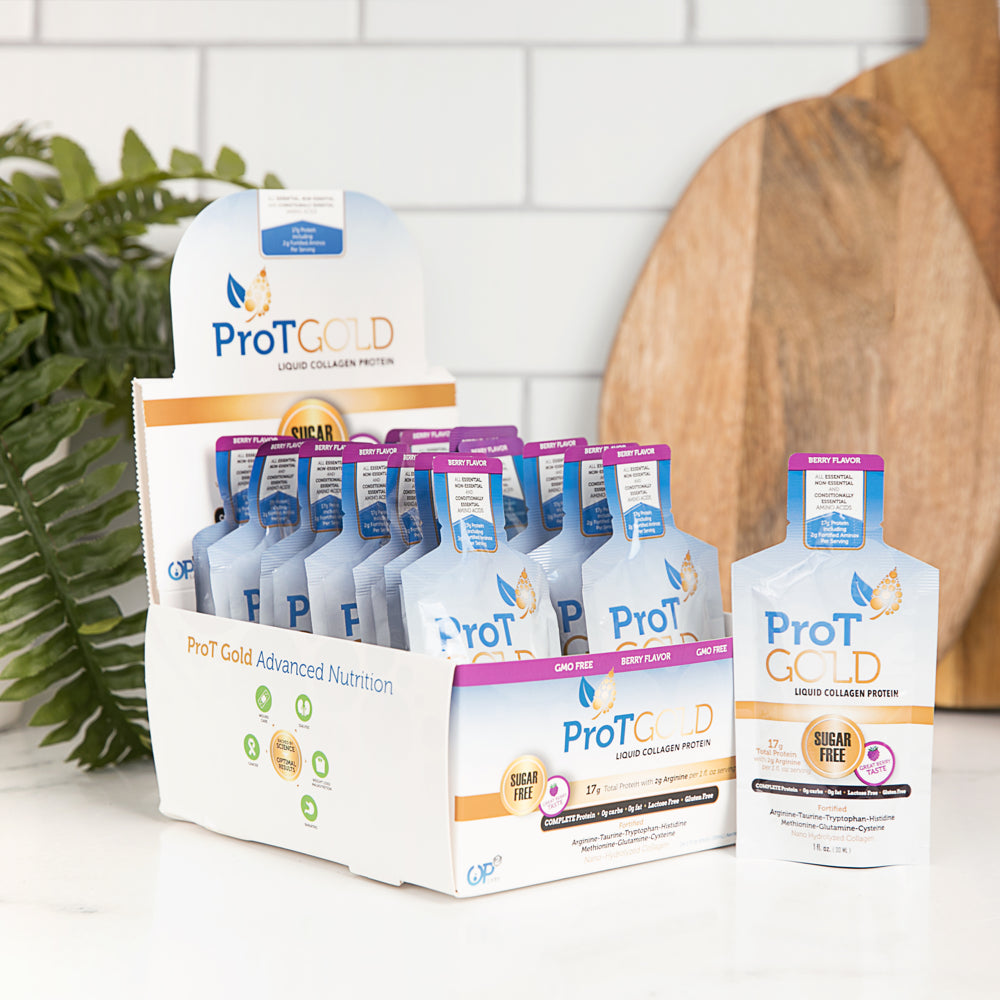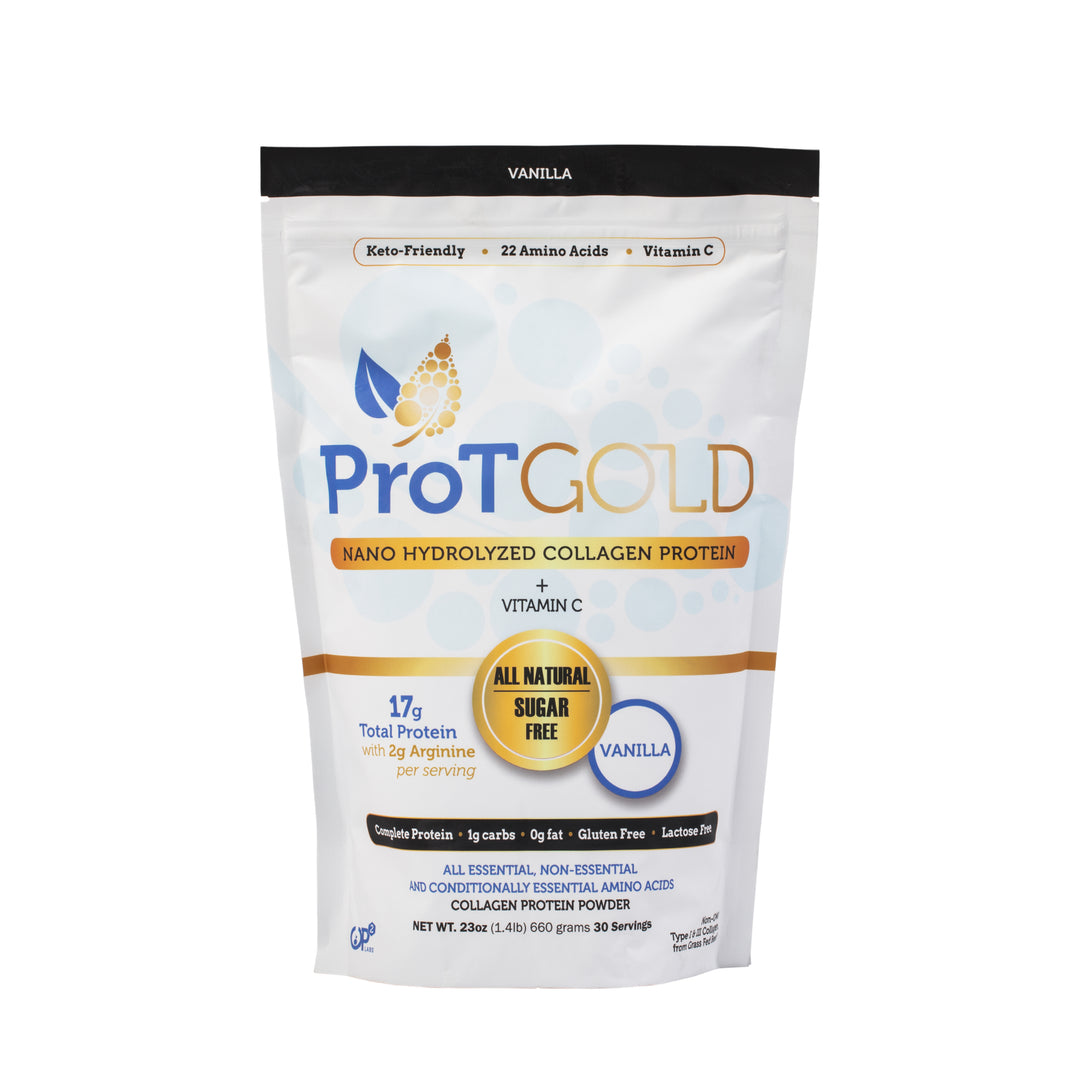The Difference Between Complete and Incomplete Proteins & Examples
Everything that we eat has a nutritional value, and when we look at the proteins that we eat, we should make sure they help us reach our dietary needs. But what are complete and incomplete proteins, and should you care?
Most of us simply recognize that protein is protein, but there are several nuances within the types of proteins we consume. And they DO make a difference.
But before we dive into the difference between complete and incomplete proteins, let's make sure you know what protein is, why you need it, and what it is made of.
What is protein and why do we need it?
From reaching your fitness goals to using protein to help you lose weight, different types of protein can help your overall health. But all protein, no matter the source, is made up of a combination of different amino acids.
Your body only needs about 20 different amino acids to make all the types of protein found in the human body. Amino acids are broken into three groups: essential, non-essential, and conditionally essential.
All foods we eat contain a different combination of amino acids. The combination of those amino acids is what makes a protein source either a complete or incomplete protein.
We need both essential and nonessential amino acids to stay healthy, so it’s important to eat both complete and incomplete proteins.
But before we discuss the difference complete and incomplete proteins make for your body, let’s talk about all the amino acids that make up those complete and incomplete proteins.
The 9 essential amino acids
Essential amino acids are the nine amino acids that your body cannot naturally produce. You can only get essential amino acids from the food you eat, which is why they are deemed essential.
One essential amino acid is not more important than the other, you need all nine essential amino acids to make a complete protein.
-
Histidine: essential for several functions including your immune response, nervous system regulation, digestion, and sexual function
-
Isoleucine: essential for immune function and energy production
-
Leucine: essential for rebuilding muscle, vital protein synthesis, and wound healing
-
Lysine: essential for collagen production, protein synthesis, and the absorption of certain minerals like calcium
-
Methionine: essential for regulating metabolism and to aid in the absorption of zinc, selenium, and other minerals
-
Phenylalanine: essential for the production of other amino acids and neurotransmitters
-
Threonine: essential for metabolism and immune system function as well as helping to strengthen your connective tissues
-
Tryptophan: essential for appetite regulation, as well as regulating your mood
- Valine: essential for energy production, muscle growth, and muscle regeneration
The 11 non-essential amino acids
Non-essential amino acids are the eleven other amino acids your body uses to create protein in the body, but your body can make these amino acids on its own.
These should still be included in your diet, even though you can produce them. Typically, your body only produces non-essential amino acids when low or insufficient amounts have been consumed. The 11 non-essential amino acids are the remaining amino acids that your body needs within the list of 20 amino acids.
Complete and incomplete proteins will both contain different amounts of non-essential amino acids. The 11 non-essential amino acids do not influence whether specific foods are complete or incomplete proteins.
Do not let the term “non-essential” fool you. Your body can still use all 11 non-essential amino acids for specific functions and will benefit from having a little extra to distribute.
Many non-essential amino acids are a precursor to essential amino acids, meaning that when consuming non-essential amino acids, your body can convert them into essential amino acids.
-
Alanine: converts glucose to energy in the body
-
Arginine: removes ammonia from your body, supports immune system function, and helps with wound healing, cell division, and hormone production
-
Asparagine: helps with the development of brain cells and overall brain function
-
Aspartic acid: precursor to four essential amino acids
-
Cysteine: supports healthy liver function and antioxidant function
-
Glutamic acid: converted to glutamate, a neurotransmitter important for memory and learning
-
Glutamine: removes ammonia from the body, helps you to maintain a healthy pH level, and supports protein synthesis
-
Glycine: may improve sleep and maintain a healthy sleep cycle by regulating the central nervous system
-
Proline: primary amino acid found in collagen protein
-
Serine: supports your neurotransmitter function and helps to regulate metabolism
- Tyrosine: precursor to epinephrine, norepinephrine, and dopamine
Conditionally essential amino acids
Conditionally essential amino acids are non-essential amino acids that become essential because of a change in your body. These changes most often occur during pregnancy, adolescence, or some kind of trauma.
Once your body can regulate normally again, conditionally essential amino acids become non-essential again.
The difference between complete and incomplete proteins
Now that we know that all proteins are composed of amino acids, we can distinguish between complete and incomplete proteins.
All proteins are made up of amino acids. Even incomplete proteins are composed of amino acids - they are simply lacking one or more of the essential amino acids.
A complete protein is a food protein containing all nine essential amino acids.
An incomplete protein is a food protein that does not contain all nine essential amino acids or does not contain a high enough level of all nine essential amino acids to be useful to your body.
Most plant foods are considered to be incomplete proteins because they lack one or more of the amino acids your body requires to build new cells. Some of the protein foods that are incomplete proteins contain all nine amino acids, but not enough of all of them to be considered complete.
This is one of the reasons a plant-based diet and wound healing might not be the most effective. Many of the essential amino acids your body needs are harder to get on a plant-based diet.
Complete proteins are commonly associated with animal proteins, but they can also be found in plant foods like soy products, hemp, chia seeds, buckwheat, and nutritional yeast.
So between complete and incomplete proteins, what should you be eating more of? Let’s make sure you are getting all the complete and incomplete proteins you need out of your diet.
Examples of complete protein foods
The most common foods that are complete protein are animal products, like eggs, dairy, meat, and fish.
Soy products like tofu, miso, tempeh, and edamame, are also complete proteins. There are also a few other plants that form a complete protein, like quinoa, spirulina, chia seeds, hemp, buckwheat, and amaranth.
You can also find protein supplements that are complete and incomplete proteins. Whey supplements, for example, are always a complete protein. Collagen peptides may or may not be a complete protein, depending on whether they’ve been fortified with tryptophan, the only amino acid collagen does not naturally contain.
What are collagen peptides? Collagen is the most abundant protein in the human body, often found in animal bones and connective tissue. Collagen peptides are collagen molecules that have been broken down for easier absorption.
Collagen has a huge list of health benefits, and all you need to do to boost your protein intake with collagen is check the ingredients list for tryptophan!
Examples of incomplete protein foods
Most, but not all, nuts, grains, and legumes are incomplete proteins. Vegetables and seeds are also incomplete proteins, but you can make them complete proteins by combining them with foods that have the missing amino acids.
A lot of people tend to overcomplicate the idea of complete and incomplete proteins in food combinations. You don’t need to memorize the amino acid combinations in all plant foods to learn how to make an incomplete protein complete!
Taking grains and legumes, and combining them, in most cases makes them a complete protein combination because together they contain a high enough level of all nine essential amino acids.
One common example of plant-based foods that are deemed incomplete proteins (but become complete proteins when combined) is rice and beans (or lentils).
Some examples of incomplete protein food combinations that make a complete protein include:
- Whole grains with legumes: rice and beans or hummus and pita bread
-
Whole grains with nuts/seeds: nut butter on whole wheat toast or a grain bowl topped with sliced almonds
- Legumes with nuts/seeds: a salad with chickpeas and pumpkin seeds
The benefit of diets rich in complete and incomplete proteins
Incorporating more complete and incomplete proteins in your diet comes with a massive boost to your overall health. This is partly because the best way to get a good variety of amino acids, you’ll need to eat a wide variety of foods that contain all the different nutrients your body needs. But protein is the most basic building block of our bodies, and getting enough of it is critical for your health.
Making changes to your diet can be difficult and overwhelming, and supplements can help. Our fortified hydrolyzed collagen protein has all of the essential and non-essential amino acids your body needs for you to be your healthiest self.
FAQs about protein
Protein is one of the best supplements to take daily, especially if you have dietary restrictions.
People who have allergies, struggle to eat meat, or have difficulty eating can struggle to get enough protein in their diet. Supplements can help them give their bodies enough protein, even when they can’t eat other foods.
There are plenty of common questions about complete and incomplete proteins in your diet. We’ll take a look at a few, but be sure to follow up with your healthcare professional for any specific concerns you might have.
Can I get all the amino acids I need from the food I eat?
You may be able to get enough amino acids from consuming both complete and incomplete proteins. Incomplete protein foods can become complete proteins, so those who follow a vegetarian or vegan diet will need to make sure they’re getting all the essential amino acids they need.
Many dietary experts suggest that by eating a balanced diet with plenty of grains, legumes, protein-rich vegetables, seeds, and nuts you will reach the necessary essential amino acid goals.
More attention may be put on making incomplete proteins complete if you are someone looking to increase muscle mass. However, if you are working on losing or maintaining a healthy weight, less of a focus needs to be on complete proteins. Your needs for complete and incomplete proteins will change throughout your life.
You can follow general dietary guidelines or work with a doctor to identify your protein needs. Identifying your overall protein needs can help you identify food combinations and protein sources that work best for you.
The most important thing is to focus on a well-rounded and balanced diet that includes a wide variety of legumes, grains, nuts, seeds, and vegetables throughout the day. As long as your diet is well balanced, the number of complete and incomplete protein foods you eat shouldn’t matter.
That being said, only some people are eating a well-balanced diet, and in those cases, how many complete and incomplete proteins you consume can make a difference. With a little planning, you should be able to get all the amino acids you need through food.
Are incomplete proteins still good for you?
Yes! Complete and incomplete proteins are both good for you since your body will put all the amino acids it can get to work. It’s important to make sure you’re getting all nine essential amino acids in your diet regularly, though. And if you have any health conditions, talk with your doctor about your changing nutritional needs.
If you struggle to get enough complete proteins in your regular diet, consider looking into protein supplements to give your body a boost.
How can I tell if I’m getting enough protein?
Figuring out how to get enough protein can be tricky, especially if you have high protein goals to meet. Most adults need between 35 and 56 grams of protein a day. Your protein needs will be higher if you lead a highly active lifestyle, or if you have certain health conditions.
There are also a few ways to tell you’re not getting enough protein, such as:
- Swelling in your abdomen, legs, and feet
- Weakness and fatigue
- Hair, nail, and skin problems
If you’re experiencing any of these symptoms, be sure to call your doctor. They can help you make a plan to get enough complete and incomplete proteins back into your diet to stay healthy.
What if I’m not getting enough protein?
The simplest way to boost diets that don’t have enough protein is to add a protein supplement of some kind to your daily routine. This can come in the form of a protein powder or a liquid protein supplement.
There are several types of protein supplements to choose from, but how do you know if it is a complete protein or not?
Should you be taking a protein supplement that contains both essential and nonessential amino acids?
While a focus should be put on your essential amino acids, keep in mind that taking non-essential amino acids simply helps your body to distribute amino acids more efficiently to areas of need.
Depending on your needs, your body may be able to benefit from amino acids found in both complete and incomplete proteins. For instance, if you have arthritis, your body may need more non-essential amino acids like proline to help your body produce more collagen protein.
Collagen is an essential player in all your tissues, but it’s not a naturally complete protein. You can find collagen supplements, but make sure to look for collagen peptide proteins that are fortified with tryptophan.
In any supplement, opt for proteins that are fortified with non-essential amino acids to get the best of both complete and incomplete proteins. You’re supplementing your diet with essential amino acids to ensure that you are giving your body the nutrients it needs, and you are also receiving some non-essential amino acids to help boost and support natural body functions.









